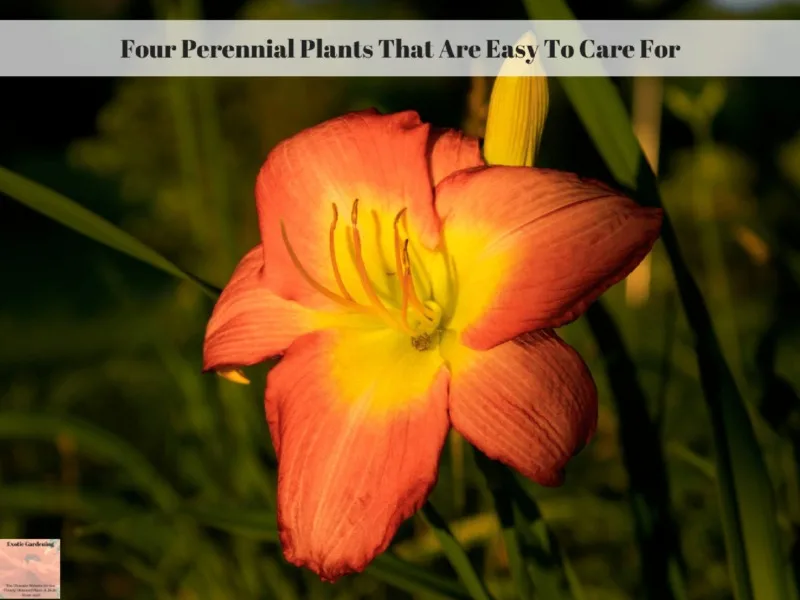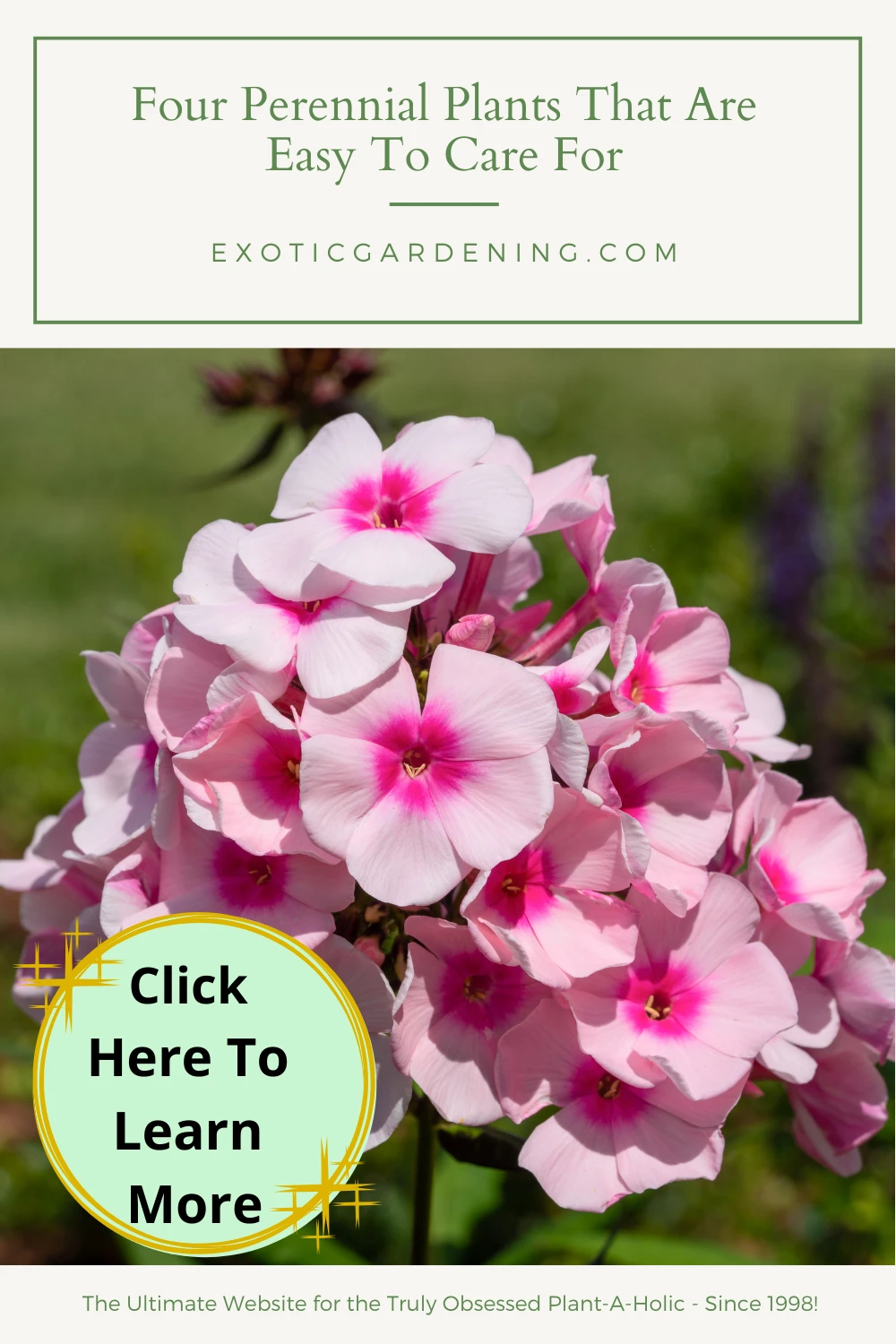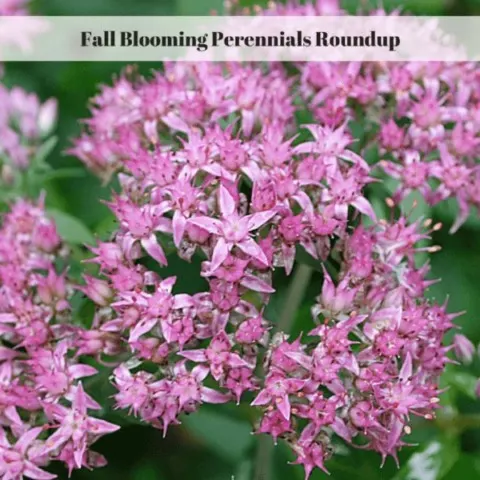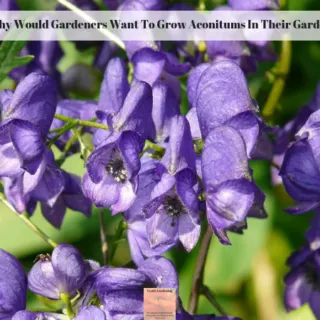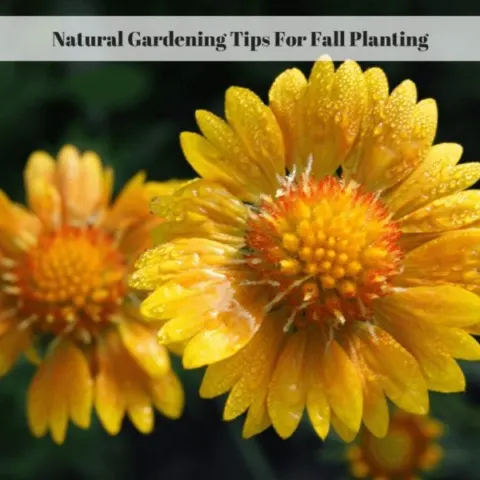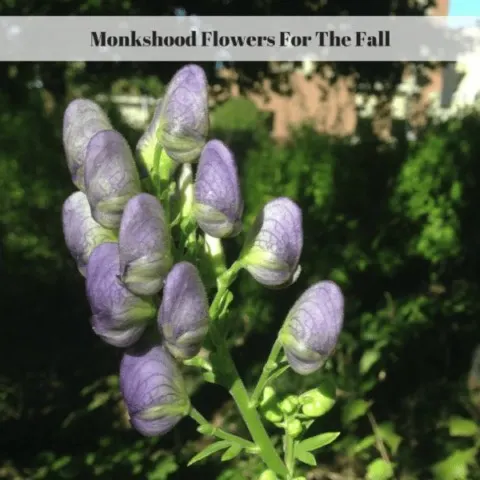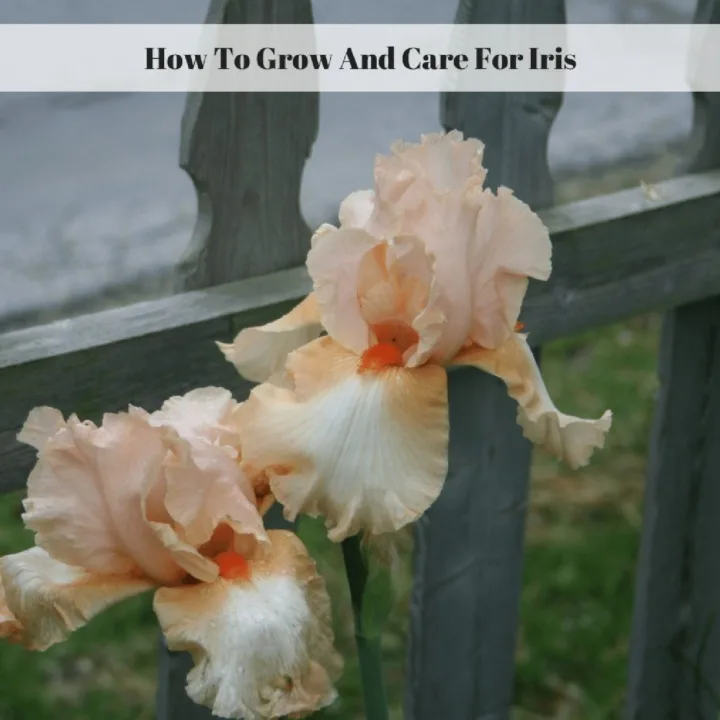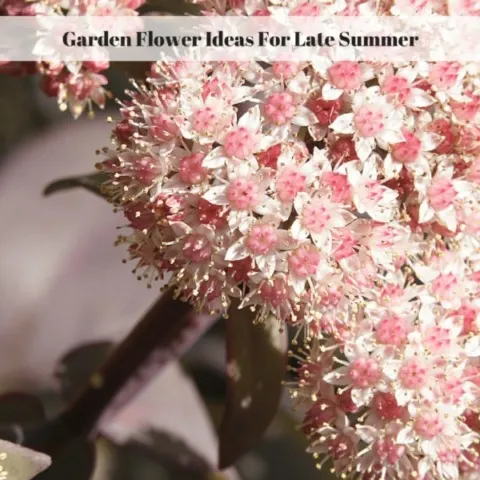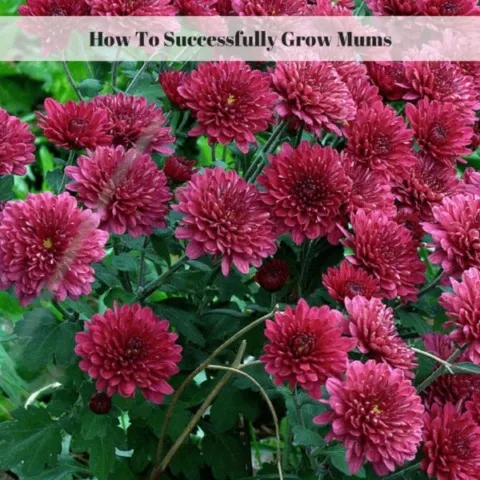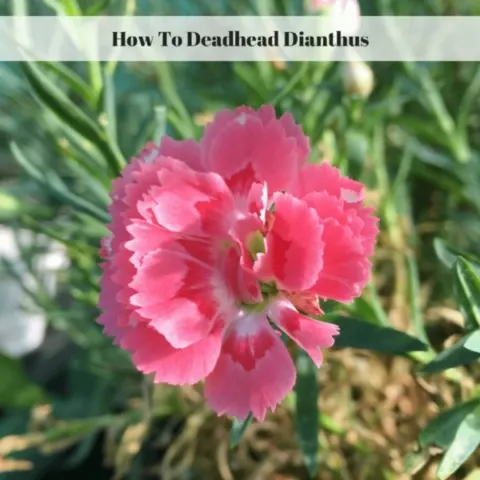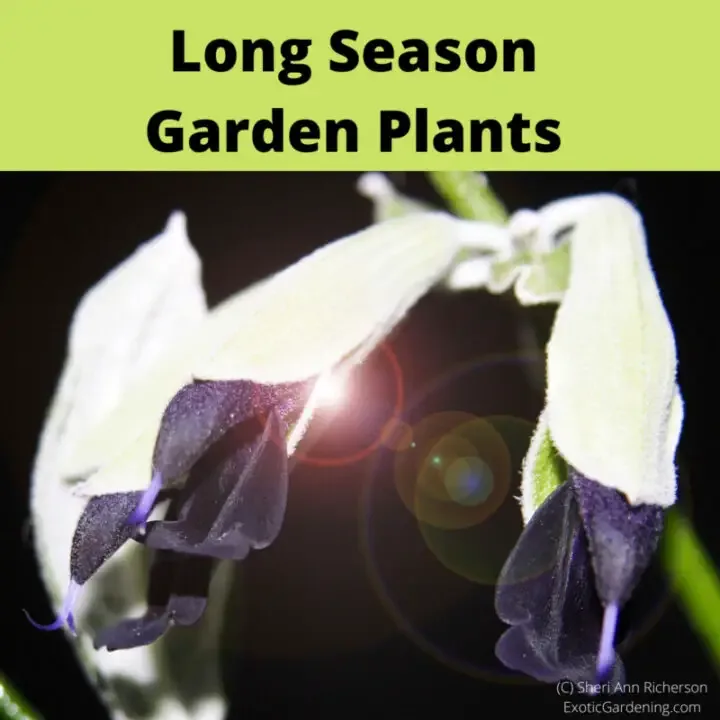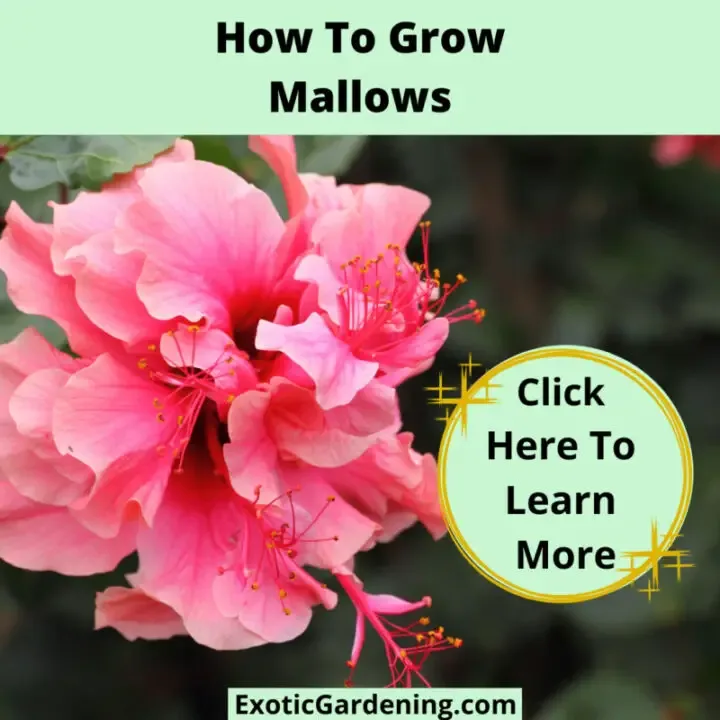When it comes to four easy plants to care for, busy gardeners will delight in these low maintenance perennials that require minimal care once established and bloom throughout most of the summer.
Picking the right plants to start with makes it easy to create a beautiful landscape.
In addition to looking good in the garden, these plants are also hummingbird and butterfly magnets.
Deadheading, or removing the faded flowers, prevents these plants from setting seed and with the exception of the daylily, encourages them to re-bloom.
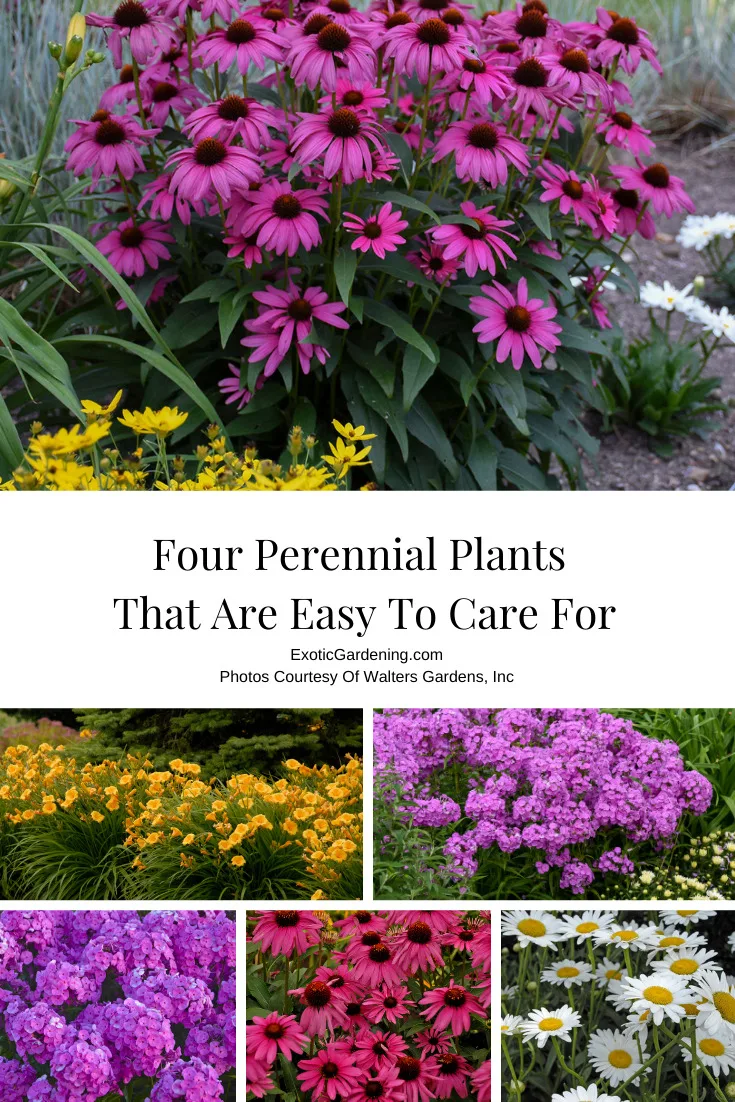
Here are the four plants I recommend as well as links to products I recommend from companies I have a referral relationship with. I will be compensated if you make a purchase after clicking on my links.
Daylilies Are Very Easy Plants To Care For
Daylilies (Hemerocallis) are no-fail, no-fuss plants that truly thrive on neglect.
Once established, they are drought tolerant, multiply easily and are prolific, colorful bloomers.
Daylilies thrive in almost any soil type, even in areas such as ditches that flood and are not affected by high temperatures.
Grow daylilies in full sun or part-shade.

Daylilies range in height from a mere 8 inches tall to well over 5 feet tall.
The flowers come in many shapes, sizes and almost every color of the rainbow.
Some varieties are fragrant and others bloom strictly at night.

Each flower lasts just one day, although some varieties, such as Stella D’Oro will bloom all summer long.
Daylilies are hardy in U.S. Department of Agricultural hardiness zones 3 through 9.

Purple Coneflower Is Another Easy To Grow Plant
Purple coneflowers (Echinacea) are tough, drought tolerant plants that are native to the eastern and central regions of the United States.
One of the more popular varieties available is Echinacea 'Purple Emperor.'
Grow purple coneflower in full sun in well-drained soil.
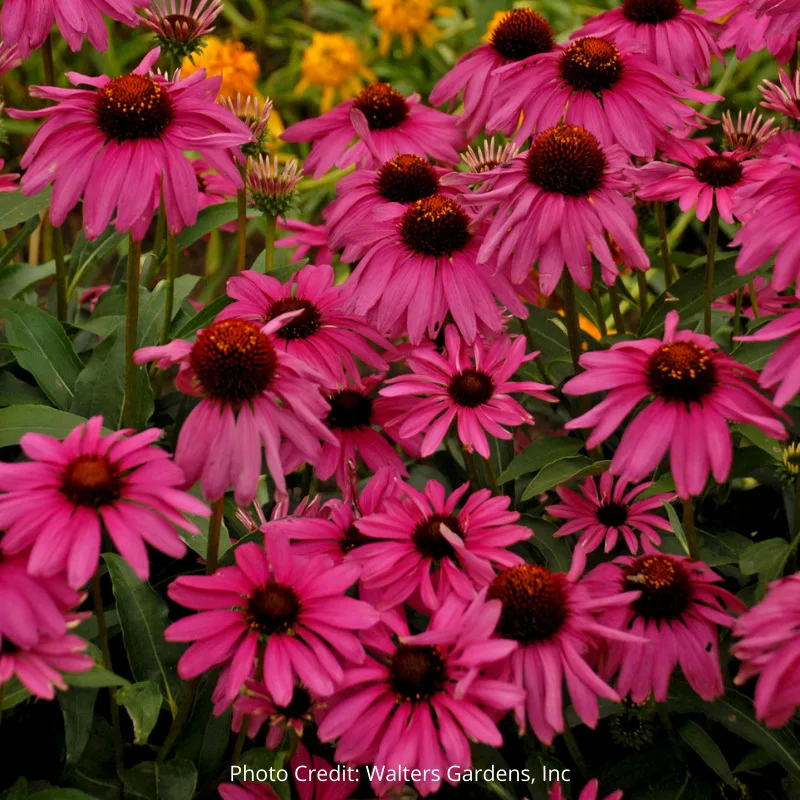
The flowers, which come in a wide variety of colors including purple, white, pink, orange and yellow, begin blooming in mid-June and continue blooming right up until frost.
Allow some of the last blooms to set seed.
The seed will attract goldfinches into the winter garden.
Purple coneflower does self-seed so any seed the birds miss that hits the ground could become a new plant.
Purple coneflower is hardy in USDA hardiness zones 3 through 9.
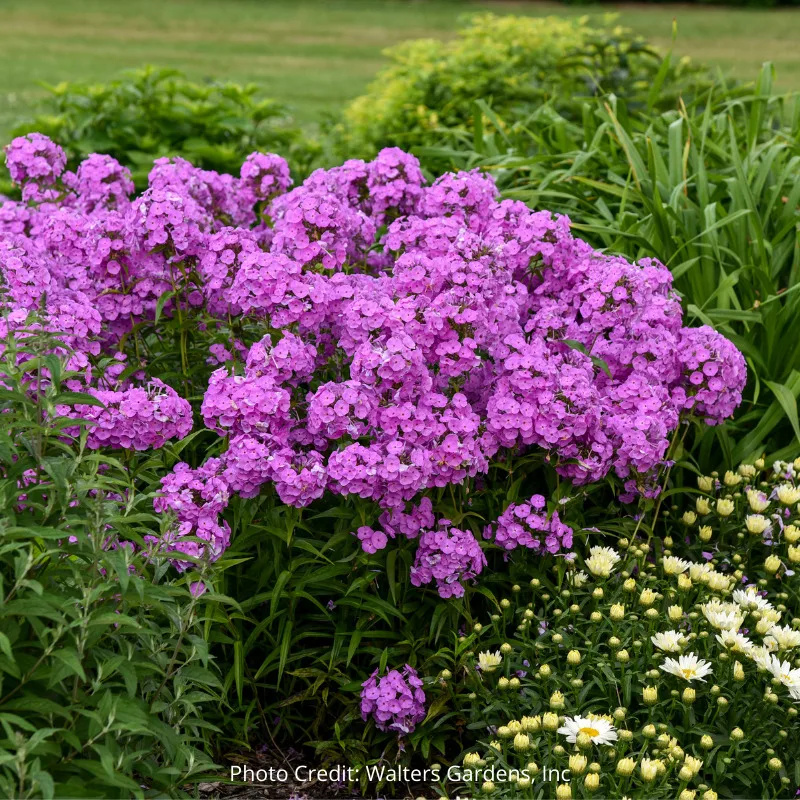
When It Comes To Easy Plants, Choose Phlox
The showy, fragrant pink, purple, red or white flowers of the common tall garden phlox bloom for six weeks or more in the garden.
There are both perennial and annual varieties of phlox however I am only talking about the perennial varieties here, such as Phlox 'Fashionable Early Flamingo.'
An ideal plant for the back of the border, phlox attracts both butterflies and hummingbirds.
To prevent the flowers from reverting back to purple, deadhead every faded flower so seeds are not set.

Phlox is known for powdery mildew.
This is easy to prevent by allowing adequate air circulation around the plant.
Watering the plant with spoiled milk helps sometimes too because of the extra calcium in the milk.
Grow tall garden phlox in full sun in moist, well-drained soil.
Perennial phlox, which returns to the garden year after year from its own root system, is hardy in USDA hardiness zones 4 through 8.

Shasta Daisies Are Also Easy To Care For Plants
Shasta daisies (Leucanthemum) are some of the easiest plants to grow in the garden.
Their bright white daisy like flowers with vivid yellow center are ideal for naturalizing, look good in wildflower gardens and the colors are harmonious with almost any color combination.
Shasta daisies are known for attracting butterflies and are also a good cut flower for bouquets.

One of the most popular varieties is Leucanthemum superbum 'Becky.'
They bloom from July through September.
Grow Shasta daisy in full sun or part-shade in moist, well-drained soil.
Many of the new varieties on the market offer different flower forms and heights than the old-fashion variety.
Some varieties are ideal for growing at the front of the flower border and reach a mature height of just 12 inches.
Shasta daisies are hardy in USDA hardiness zones 4 through 9.
Perennial Plants
Awesome Colorful Plant Combinations: Reliable Daylily And Geranium
If you're looking for a colorful, easy to care for perennial plant combination, try the daylily and geranium.
How To Successfully Grow Mums
Chrysanthemums, commonly referred to as mums are a beautiful fall blooming plant. Check out these tips to successfully grow mums!
Long Season Garden Plants
Long Season Garden Plants
How To Grow Mallows
Learn how to grow mallows, a Malvaceae family which includes some of the most popular plants for the home garden, Hibiscus.
Popular Plants For Miniature Gardens
There are a number of popular miniature plants that are ideal to use to create miniature gardens inside or outside your home or office.
Sweet Autumn Clematis: A Garden Treasure
Discover the enchantment of Sweet Autumn Clematis: rapid growth, fragrant blooms, and versatile garden beauty await!

